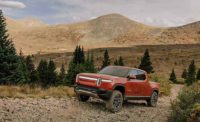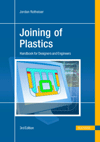Automotive Industry
Off-Road Competition Forges Next Generation of Automotive Engineers
During Baja SAE Carolina, college students gain real-world design, engineering and business experience.

The Baja SAE Carolina competition is a pinnacle event in automotive engineering, offering university students a unique platform to design, build, test and race rugged off-road vehicles. Organized by SAE International, this annual event challenges participants to apply their theoretical knowledge in real-world scenarios, fostering innovation, teamwork and technical expertise. For the automotive industry, Baja SAE Carolina represents a vital pipeline for cultivating future talent while pushing the boundaries of off-road vehicle design.
A Legacy of Innovation
Baja SAE traces its origins to 1976 at the University of South Carolina, where Harit Mehta, Ph.D., oversaw the inaugural event with just 10 teams. Since then, it has become a global phenomenon, with competitions held in Brazil, South Africa, Korea and Mexico. Baja SAE Carolina is one of the most prominent iterations of this series, attracting more than 100 university teams annually.
The competition revolves around designing a single-seat prototype off-road vehicle for recreational users. Each team must ensure their vehicle is reliable, ergonomic and economical while surviving punishing terrain. The standardized use of a 14-horsepower Kohler Command Pro CH440 engine levels the playing field, emphasizing design ingenuity over raw power.
“Baja SAE has provided me with an extremely valuable experience during my time at Clemson by allowing me to grow my skills as an engineer in a real world setting,” says Jordan, an engineering student at Clemson University. “The creative outlet that Baja is generates an opportunity where I get to have a hand in a project from the ground up. It also provides some vital life lessons from working in teams with deadlines on all sorts of different aspects that translate well into many different facets of life.”
 Baja SAE Carolina challenges students to apply their theoretical knowledge in real-world scenarios, fostering innovation, teamwork and technical expertise. Photo courtesy University of North Carolina Charlotte
Baja SAE Carolina challenges students to apply their theoretical knowledge in real-world scenarios, fostering innovation, teamwork and technical expertise. Photo courtesy University of North Carolina Charlotte
The Competitive Structure
Baja SAE Carolina is divided into static and dynamic events, much like a vehicle’s development. Before students start “bending metal,” considerable business planning and engineering time is invested in the design, simulations, design reviews and other activities.
In the static events, teams present their engineering designs and business plans to judges. The design report evaluates technical specifications, such as CAD modeling, manufacturability and system integration. Meanwhile, the sales presentation simulates pitching to executives for a fictitious contract to produce 4,000 units annually.
Dynamic events are where the rubber meets the road. These include acceleration tests, maneuverability trials, suspension evaluations and the endurance challenge—a grueling four-hour off-road race that tests each vehicle’s durability under extreme conditions. Approximately 25 to 60 percent of vehicles fail to complete this event due to mechanical breakdowns or terrain challenges.
Hands-On Learning for Future Engineers
Baja SAE Carolina is more than just a race; it’s an educational crucible where students gain practical skills applicable to the automotive industry.
Participants master techniques like systems engineering, machining, CAD modeling and structural analysis. The competition introduces the participants to the value of testing the product and the relationship to product development and maturation. Beyond the product development portions of the project, students learn to apply advanced manufacturing technologies, such as CNC machining and plasma cutting.
Project management skills are also learned. The teams manage budgets, schedules and resource allocation—skills essential for professional engineering roles. From clearly articulating the objectives and scope of the endeavor to responding to the unknowns that emerge on the road to product delivery, product development is about learning.
Another major benefit of the competition is learning how to work as a team. My first engineering job was at a small product development organization. In hindsight, this was a benefit to my career, since it required me to learn many things, not just software, but embedded hardware, electrical components and electronics.
In contrast, large organizations can be functionally siloed. For example, companies have a separate test department, systems department, software department, and so on.
The Baja SAE competition is more like the former than the latter. Work is not segmented, but rather multidisciplinary. Communication and coordination are critical, just as they are in the real world.
Perhaps the biggest skill that students learn during Baja SAE is the ability to think on the fly. All product development projects require effective and promptly addressing emerging issues. Off-road racing conditions demand quick thinking and adaptability. Teams troubleshoot electrical and mechanical failures to optimize performance on the fly.
These experiences prepare students for careers in automotive engineering and make them attractive candidates for roles in vehicle development, from specialty vehicles to motorsports and beyond. Many Baja SAE alumni have worked with leading organizations in NASCAR, IndyCar, the International Motor Sports Association, and passenger vehicle development.
Impact on the Automotive Industry
Baja SAE Carolina is a vital workforce development initiative for the automotive sector. It bridges the gap between academic learning and industry demands by immersing students in real-world challenges. Companies benefit from hiring graduates who have already demonstrated proficiency in design innovation and teamwork under competitive conditions.
Moreover, Baja SAE fosters technological advancements in off-road vehicle design. Teams continually push boundaries by experimenting with lightweight materials, advanced suspension systems, and data acquisition technologies, such as GPS loggers and shock pressure sensors. These innovations often influence broader trends in recreational vehicle manufacturing.
Baja SAE Carolina is not just an event for participants; it’s a celebration of engineering excellence that engages spectators and volunteers alike. Motorsport enthusiasts can witness cutting-edge designs tackling rugged terrains while industry professionals contribute as judges or technical inspectors. This collaborative atmosphere reinforces the event’s role as a hub for innovation and networking within the automotive community.
Baja SAE Carolina exemplifies how hands-on learning can transform budding engineers into industry-ready professionals. By challenging students to design vehicles capable of conquering extreme terrains while adhering to strict technical standards, this competition nurtures creativity, resilience, and collaboration—qualities indispensable for success in automotive engineering.
For the automotive industry, Baja SAE Carolina is more than just a competition; it’s an incubator for talent and innovation that continues to shape the future of off-road vehicle design. As teams gear up for another thrilling season in 2025, one thing is sure: Baja SAE Carolina remains at the forefront of engineering education and innovation.
Learn More and Get Involved
Come to the event and look for future talent for your organization, whether an OEM, a lower-tier supplier, or experienced engineering talent. The next event will take place Oct. 2-5 in Gray Court, SC.
Visit Baja SAE Carolina for detailed guidelines, volunteer information, and information on how you can support the next generation of innovative engineers. For more information on becoming a sponsor or volunteer, email bajasaecarolina2025@gmail.com or contact Jeff Poland at jpoland.sae@gmail.com.
Looking for a reprint of this article?
From high-res PDFs to custom plaques, order your copy today!








